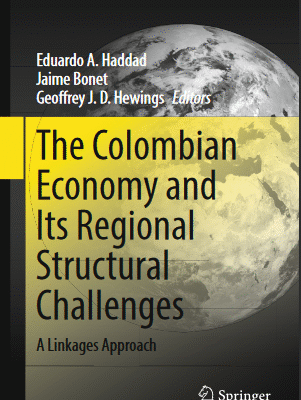

خرید و دانلود نسخه کامل کتاب The Relational Governance of Artificial Intelligence Forms and Interactions – Original PDF
64,500 تومان قیمت اصلی 64,500 تومان بود.37,500 تومانقیمت فعلی 37,500 تومان است.
تعداد فروش: 48
Author:
Sabine Wiesmüller
Chapter 1 Introduction and Theoretical Foundations Liberalism always cherished political equality, and it gradually came to realise that economic equality is almost as important. For without a social safety net and a modicum of economic equality, liberty is meaningless. But just as Big Data algorithms might extinguish liberty, they might simultaneously create the most unequal societies that ever existed. All wealth and power might be concentrated in the hands of a tiny elite, while most people will suffer not from exploitation, but from something far worse – irrelevance (Harari, 2018, 3, p. 74). More than ever, we find ourselves in an era of great change, happening at unknown pace (Harrington, 2018), and confronted with so-called exponential digital tech- nologies (Moore, 2006). With these becoming accessible to the economy, their true disruptive potential (Leonhard & von Kospoth, 2017) unfolds and this is having a ripple effect on different sectors, industries, and entire business models (Parviainen et al., 2017; Schwab, 20161 ; Stolterman & Fors, 2004). In particular, Artificial Intel- ligence (AI) is estimated to be the single most influential and disruptive factor for global economies and societies in the twenty-first century and the probable trigger for the next (industrial) revolution (Goli ́c, 2019; Makridakis, 2017; Paschek et al., 2019; Pathak et al., 2019). 1.1 Introductory Remarks In this book, I will define AI as an umbrella term for all technologies developed to analyse and interpret big sets of data or certain events, to assist human decision- making and thereby automating decision-making and actions performed by machines (Nilsson, 2009), particularly machine learning, as well as further advancements such as artificial neural networks (ANN) and deep learning.2 1 Computational power is understood to be the main force for the third industrial revolution. 2 The concepts mentioned will be further discussed in Chapter 2. © The Author(s), under exclusive license to Springer Nature Switzerland AG 2023 S. Wiesmüller, The Relational Governance of Artificial Intelligence, Relational Economics and Organization Governance, https://doi.org/10.1007/978-3-031-25023-1_1 1 2 1 Introduction and Theoretical Foundations Given the adaptable nature of AI, not being one specific technology or product but rather a tool, applicable to countless existing business models, processes, and products, it cannot be regulated based on one specific outcome or scenario, as there is a myriad of possible scenarios its application can lead to. Many authors voice the growing concerns in society accompanying these characteristics (Cath, 2018; Floridi, 2018; Floridi et al., 2018; Perc et al., 2019), particularly regarding the pace of AI development, leading to its global dynamics often being compared to an arms race (Cave & ÓhÉigeartaigh, 2019). While, until the present, market power was defined by market share and pricing, it is now dependent on factors such as access to data and data ownership—which are necessary elements for implementing AI (Drexl, 2016, 2017) and pose a barrier for new companies wanting to enter the market (Drexl, 2016; Porter, 1980). Thereby, the bar for followers to enter the market constantly rises, while digital monopolies are on the rise—giving more power and data access to ever fewer people (Ciuriak, 2018; Watney, 2018). Therefore, the most powerful actors in AI research also happen to be some of the most prominent companies around the globe, such as IBM, Amazon, Google, and Facebook (Lee, 2018). Thus, competition in AI research is fierce, as significant margins and business opportunities are attracting companies (PwC, 2019) and the effective implementation of AI has become crucial for companies to stay on top of their competitors and even stay in business (MIT, 2019; Rose, 2019). A recent study by PriceWaterhouseCoopers (PwC) predicted that by 2030, AI will contribute an expected 15.7 trillion dollars to the global economy, with an expected 45% of total economic gains originating in AI- enhanced products (PwC, 2019). Among other factors, the lack of regulation in the market puts companies in the position of either having to adapt to the race to secure their position in the market and continue to stay in business, or to let competitors get the better of them (Cave & ÓhÉigeartaigh, 2019). In consequence, the market is prone to ethical dilemmas, especially since there are no official red flags in AI research and development (Pichai, 2020). While in many cases, such as the medical field, data usage and its implications are rather transparent (Llewellynn et al., 2017), this is not always the case (Faddoul et al., 2019). One well- known example of this dilemma happened with Cambridge Analytica, a company using Facebook profile data to analyse the political preferences of its users, and, as commissioned by a client, to actively influence the users’ voting behaviour (Faddoul et al., 2019). This violation realised by corporate actors touched the core of the modern world’s achievement of free will: democracy (Lomas, 2018). While some companies have voluntarily agreed not to engage in critical research,3 such as developing autonomous weapons, there is no legally binding document preventing their development (Future of Life, 2015; Pichai, 2020), and a growing number of initiatives call for not only robust AI but also a stronger common orientation to good (Future of Life, 2015). 3 In this context, the term ‘critical’ refers to advancements which potentially pose a direct threat to society, such as the development of autonomous weapons (Cihon, 2019; Future of Life, 2015). 1.2 Theoretical Foundations: Governing Artificial Intelligence 3 Still, so far, no regulatory institution exists to enforce global, continental, or regional governance standards of AI-based business models, processes, and products that are in accordance with societal concerns and moral expectations (Dafoe, 2018). Besides the per se reactive nature of regulatory bodies, this is because regulation and standard-setting have become increasingly difficult to implement, due to the complexity associated with these new dilemma structures (Dafoe, 2018). Further, corporations possess restricted access to the knowledge about the state of the art in technology (Ferraro et al., 2015), and current legislation and regulation lack the integration of data as a new market mechanism in law-making (Drexl, 2016; Wieland, 2018). Given the pace at which new technologies are entering the market and the fact that, by nature, regulation is developed reactively to the element it is designed to regulate. Current regulation is dealing poorly with the dilemmas coming with AI implementation (Askell et al., 2019; Dafoe, 2018), and does not consider data or a system based on data flow and is unable to integrate the logic of another system into legislation (Andriole, 2019; Wieland, 2018). Thus, companies being the main driver of the change coming with new tech- nologies are called on to take responsibility for their actions, mainly because of the rising visibility of the changes coming with AI adoption, but also due to the high information asymmetry between the public and private sector (Anderson et al., 2018; Askell et al., 2019). This also holds true for civil society, where research indicates the drastic barriers its representatives are facing in multi-stakeholder dialogues, due to particularly significant information asymmetry (Fassbender, 2020). Over the course of this book, I will show how companies can engage in a collab- orative approach, such as through self-regulatory approaches and multi-stakeholder dialogues, to minimise negative outcomes for society (Gruetzemacher, 2018; Rittel & Webber, 1973; Roberts, 2000). AI ethics play an essential role in the development of such governance measures, as they will help define ‘red flags’ and guiding principles for all actors involved (Dafoe, 2018). With this, I aim to contribute to the responsible adoption of AI, minimising the negative consequences associated with it, while still applying it to its best potential (Aliman & Kester, 2019; Gasser & Almeida, 2017). In doing so, it aims to provide, particularly for economic actors, the necessary tools to shape the future of AI adoption. 1.2 Theoretical Foundations: Governing Artificial Intelligence The rise of powerful AI will be either the best or the worst thing ever to happen to humanity. We do not yet know which. (Hawking, 2016)4 As stated, the expression ‘Artificial Intelligence’ is an umbrella term for technolo- gies and models that aim for machines to mimic human intelligence, which, when 4 BBC News, 2016. 4 1 Introduction and Theoretical Foundations applied, can transform whole industries, economies, and society (Makridakis, 2017; Schwab & Davis, 2018). The development and rise of AI can be traced back to a few decisive factors that arose over recent decades. For one, computational power increased, which had an especially drastic influence on AI research. Moreover, the availability of big data grew dramatically over the last decades (Caulfield, 2009; Stolkel-Walker, 2018). 1.2.1 Artificial Intelligence The progress made in research on Artificial Intelligence was enabled by and is part of a bigger phenomenon; namely, the digital transformation. According to Parviainen et al. (2017), the term ‘digital transformation’ is defined as “changes in ways of working, roles, and business offering caused by adoption of digital technologies in an organization, or in the operation environment of the organization ” (2017, p. 16). Among others, Stolterman and Fors (2004) are convinced that “digital transformation can be understood as the changes that the digital technology causes or influences in all aspects of human life ” (2004, p. 689). A digital technology is defined as a machine or electronic device based on digital signals (Dyer & Harms, 1993), such as a computer, which is, again, defined as a machine that can be controlled and used efficiently by instructing it to follow a specific function. This instruction can come in the form of an algorithm, developed to solve the problem statement, and translated to a computer language to make it applicable to a machine (Bishop, 2006; Samuel, 1959). AI in its operationalised form, i.e., machine learning, is the software that can be applied to a digital machine, with the algorithm being its smallest entity (Awad & Khanna, 2015). However, AI is more than the mere application of a finite set of instructions to a machine (Brundage et al., 2018). 1.2.1.1 Scope of Artificial Intelligence To gain a deeper understanding of AI and its governance, the main technology types— machine learning, artificial neural networks (ANNs), and deep learning5 —and their interconnections, as depicted in Fig. 1.1, will be analysed in this book. The modern phase of AI development started around 2010, with the ongoing commercialisation of the technologies and their application outside laboratories. The main technologies stemming from this era are advanced machine learning, natural language processing, and ANNs (Nilsson, 2009). Machine learning is an umbrella term for a certain type of algorithm, namely learning algorithms, able to learn from experience or repetition. After going through 5 Abbreviations will only be used within the main body of the book, not when first introducing the concepts.



نقد و بررسیها
هنوز بررسیای ثبت نشده است.